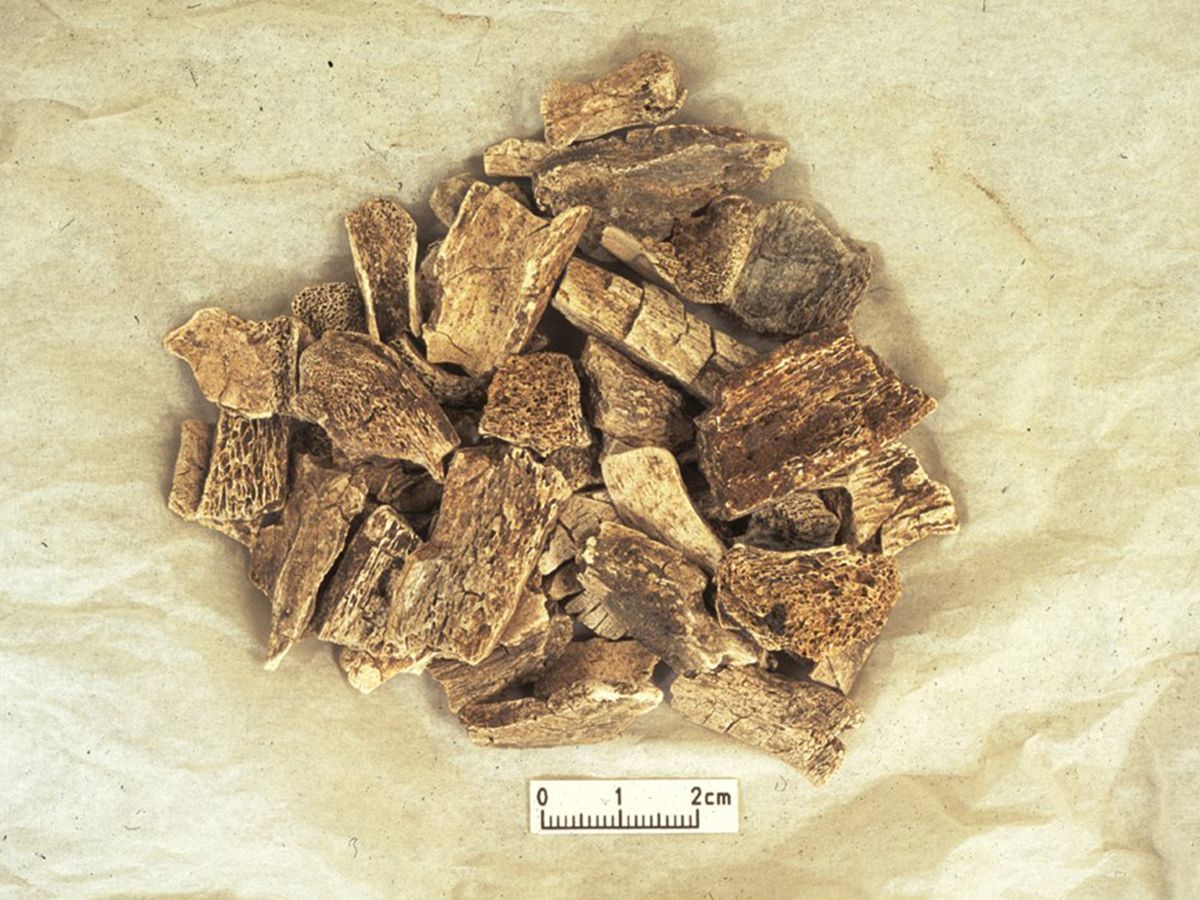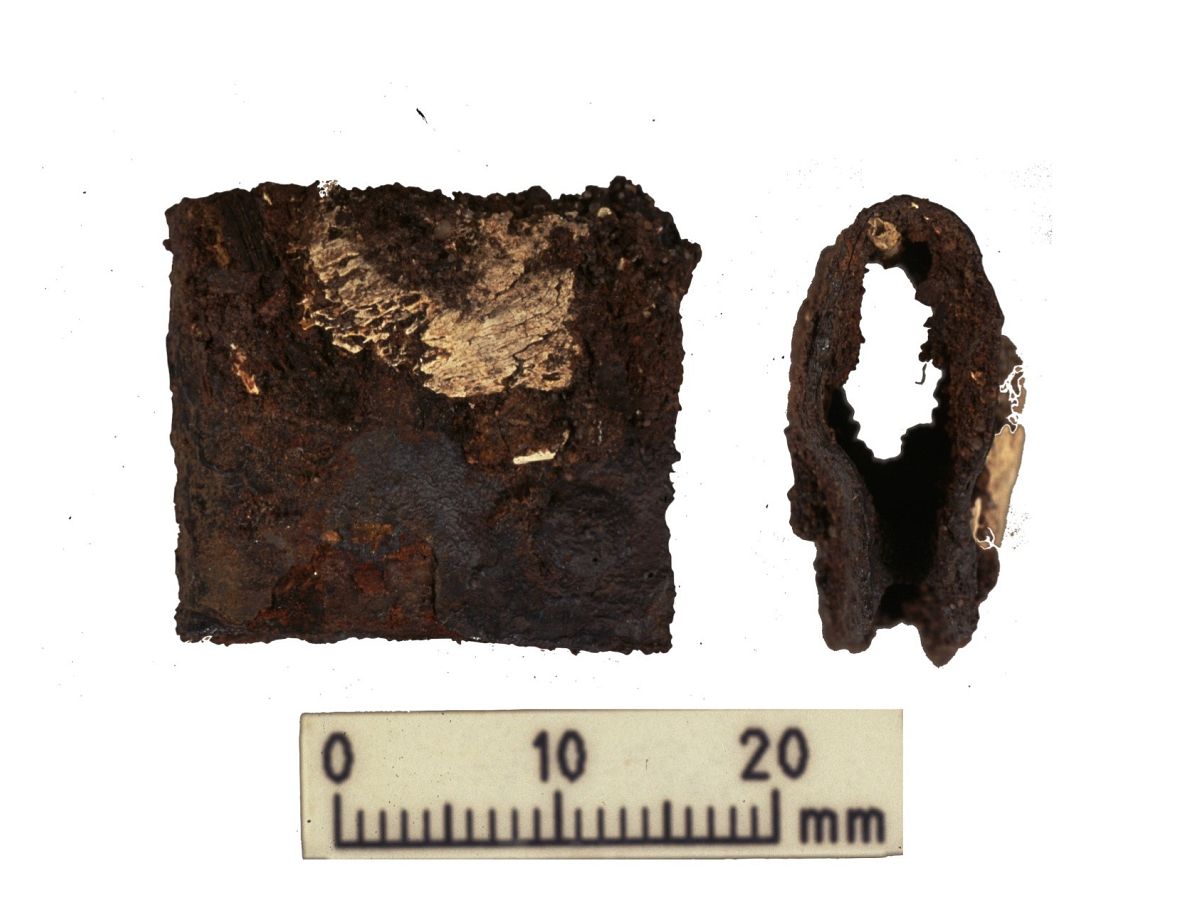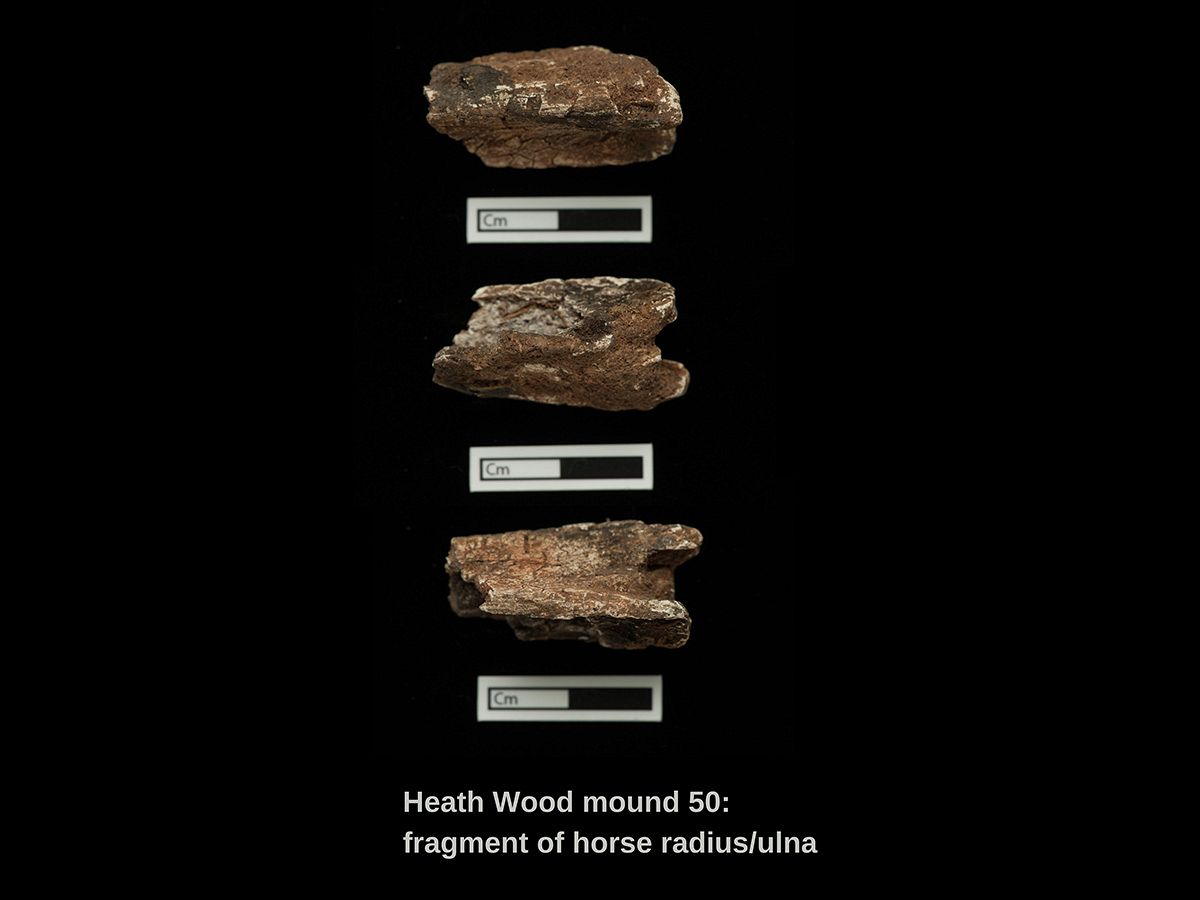New research has revealed for the first time that Vikings likely brought animals with them in boats when they invaded Britain in the ninth century.
The work, led by our archaeologists, involved analysing human and animal remains from Britain’s only known Viking cremation cemetery at Heath Wood, in Derbyshire.
The remains are associated with the Viking Great Army; a group of Scandinavian warriors who crossed the North Sea to Britain in AD 865.

Cremated animal and human bone
While they were well-known for raiding and pillaging settlements on their travels, this new research suggests they didn’t just steal animals, but also brought some of their own.
This was established by researchers analysing strontium isotopes contained within the remains at Heath Wood.
Strontium occurs naturally in rocks, soil and water before making its way into plants eaten by humans and animals.

Heath Wood shield clasp
Strontium then replaces calcium in bones and teeth, and as its ratios vary in different parts of world, it can help show where animals and people came from when found in their remains.
Of those buried in Heath Wood, one adult and three animals – a horse, a dog and possibly a pig – had strontium ratios normally found in the Baltic Shield area which covers Norway and part of Sweden.
Lead researcher, Tessi Löffelmann, who works jointly at Durham and the Vrije Universiteit Brussels in Belgium, said:
This is the first solid scientific evidence that Scandinavians almost certainly crossed the North Sea with horses, dogs and possibly other animals as early as the ninth century AD and could deepen our knowledge of the Viking Great Army.
Tessi added the revelation also raises questions about the importance of specific animals to the Vikings.

Horse fragment from Heath Wood
